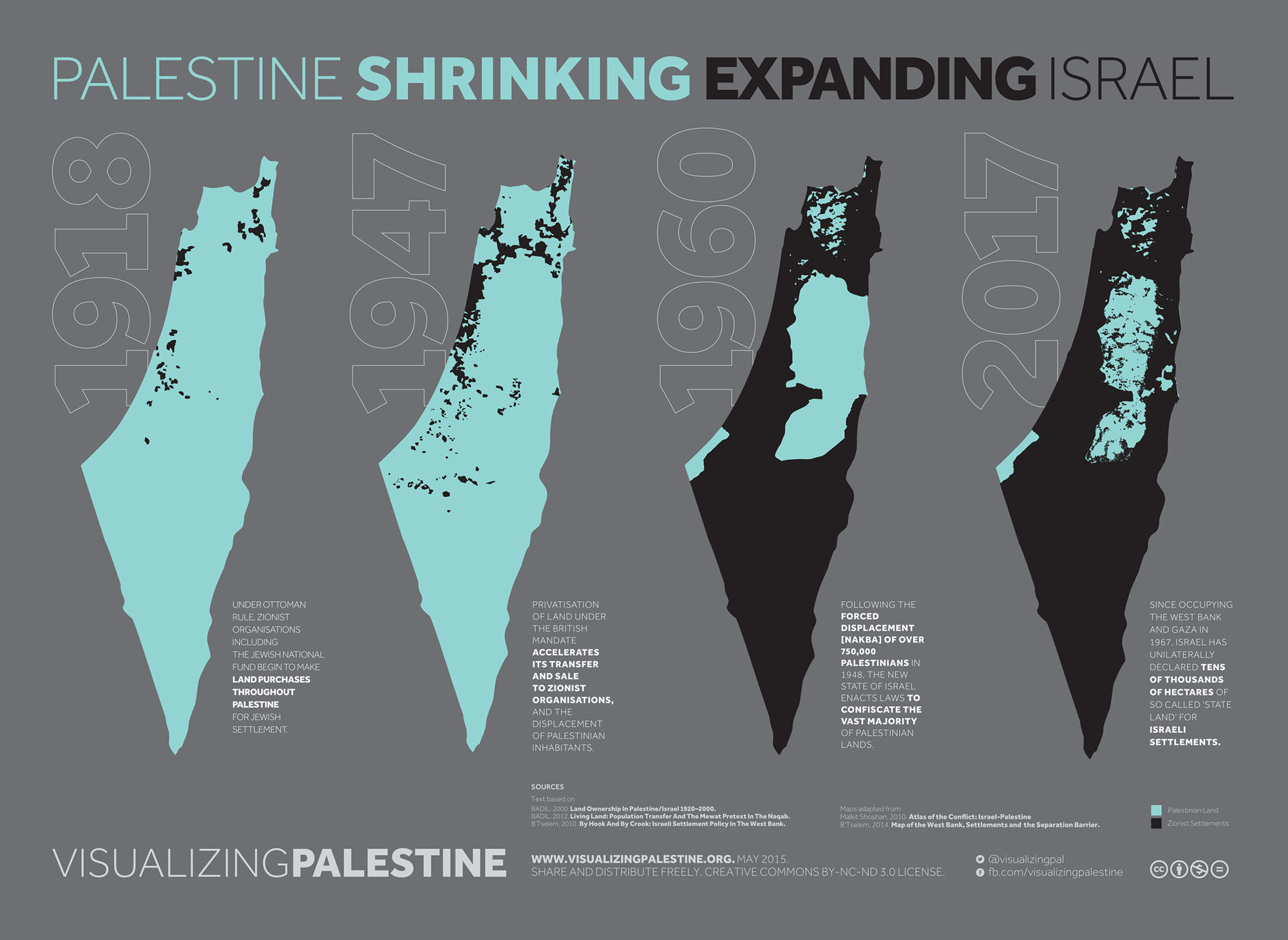Map and Geography
We could say that the current situation has two key moments in history: One is under British Madate, then between 1947-1948, when the Partition of the Palestinian territory was imposed by force, and the creation of a state exclusively for Jews in a territory densely populated by Palestinians with an Arab-Muslim majority with a significant Christian and Jewish minority, who also aspired to independence.2
Through the controversial Partition Plan (Resolution 181 of 27 November 1947), the foreign powers gave the Zionist settler minority – mostly from Central Europe – 54% of Palestine and the most fertile lands, while the native population, which made up three quarters of the total, had to make do with 46% of their land. By In addition, the new Israeli state continued, through several wars, to increase its borders by gobbling up more land from the areas earmarked for the creation of a Palestinian state, so that nowadays the Zionist state consists of 82% of the total of historic Palestine.
The rest is made up of the so-called Occupied Palestinian Territories Gaza and the West Bank, two small portions without territorial continuity where – especially in Gaza – 2.5 million Palestinians live in overcrowded conditions, most of whom are refugees expelled or fled from the annexed lands.
Moreover, this 22% of divided historic Palestine is itself militarily occupied since 1967 and is continuously colonized by Israeli settlers, while the territory is fragmented into uncommunicated Bantustans, interrupted by dozens of Israeli settlements and hundreds of military checkpoints and roads for the exclusive use of settlers.
In 1948 the Zionist dream came true. The fledgling state of Israel launched an ethnic cleansing designed and executed by Zionist terrorist militias that became known as al-Nakba, or “the catastrophe”, the moment when Palestinians were forced to leave their homes and move mainly to Gaza and the West Bank, the present-day Palestinian territories. It was an episode of enormous significance in the identity of the Palestinians today and involved the destruction of more than 600 villages and the expulsion of more than 750,000 people who today, more than 75 years later, have become more than 5 million refugees, the largest and longest-lived refugee population in the world. The impact of this ethnic cleansing, physical fragmentation and psychological dislocation on the entire Palestinian people was devastating.
Since the proclamation in 1948 of the state of Israel, the Palestinian population has been fragmented into three main groups:
- the refugee population divided between those who were forced to leave Palestine to the neighbor countries as a result of the 1948 ethnic cleansing; and those who were forced to move to others parts of Palestine from the current Israel before it was created.
- the Palestinian population that remained inside Israel after the war – better known among Palestinians as the Palestinians of the 48th or the Palestinians of the interior, and among Israelis as the Palestinians of Israel.
- Palestinians residing in what remains of Mandate Palestine – the West Bank, including East Jerusalem and Gaza, which between 1948 and 1967 were respectively under Jordanian control and Egyptian administration, and since 1967 militarily occupied by Israel.
2 https://idus.us.es/handle/11441/30941





